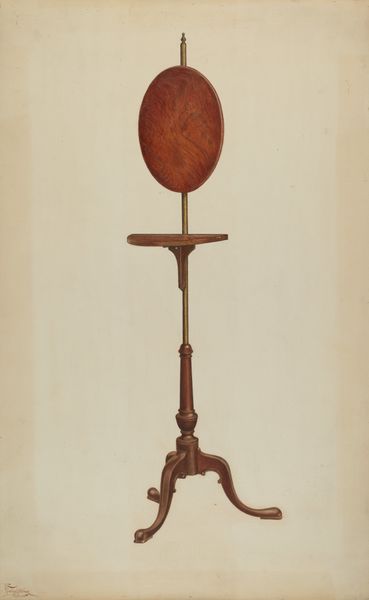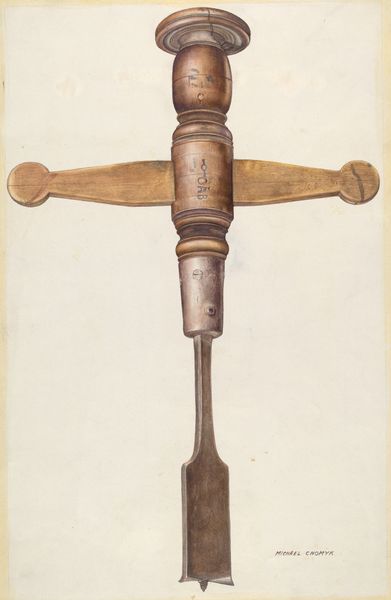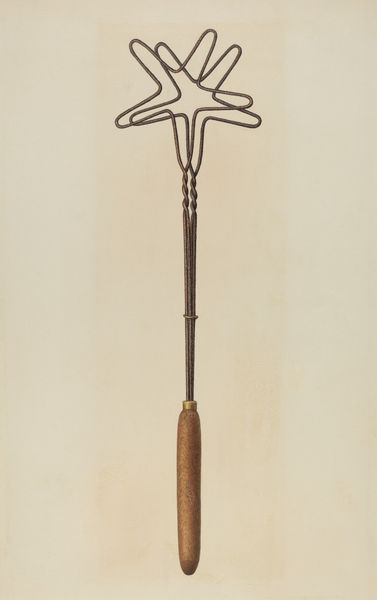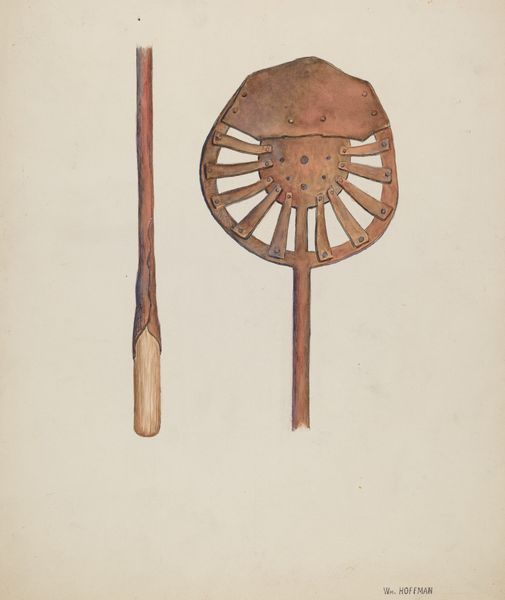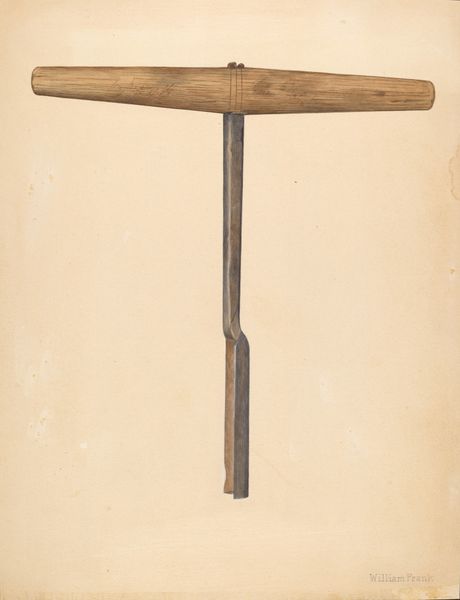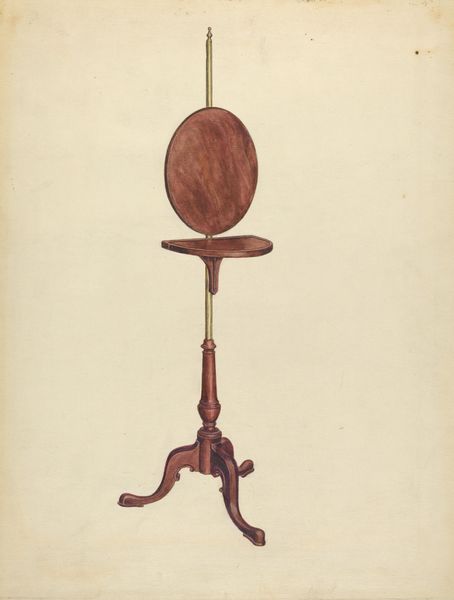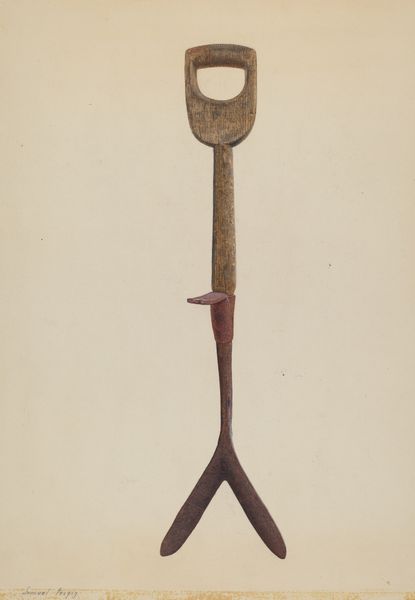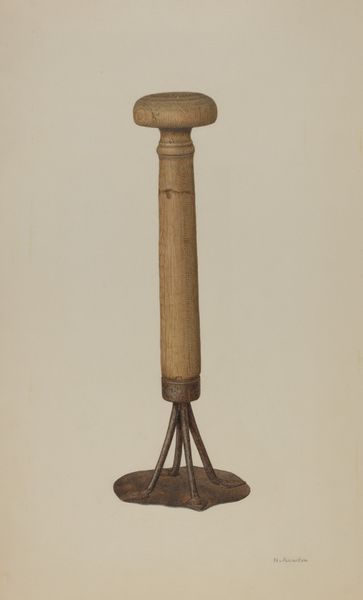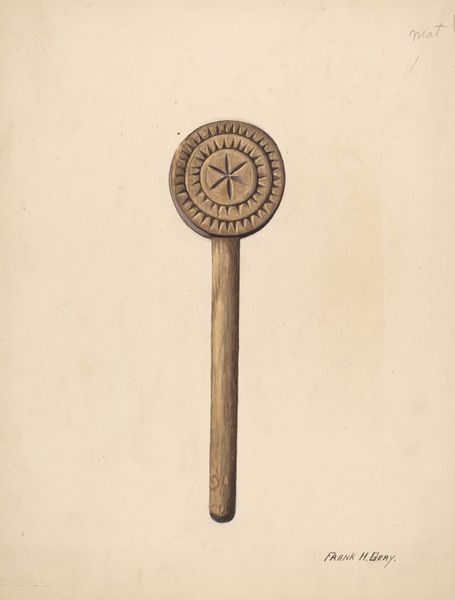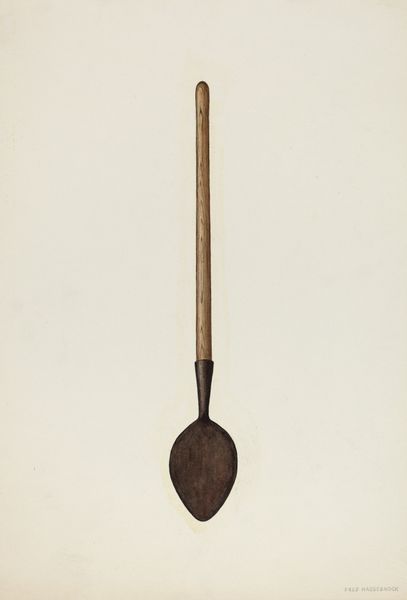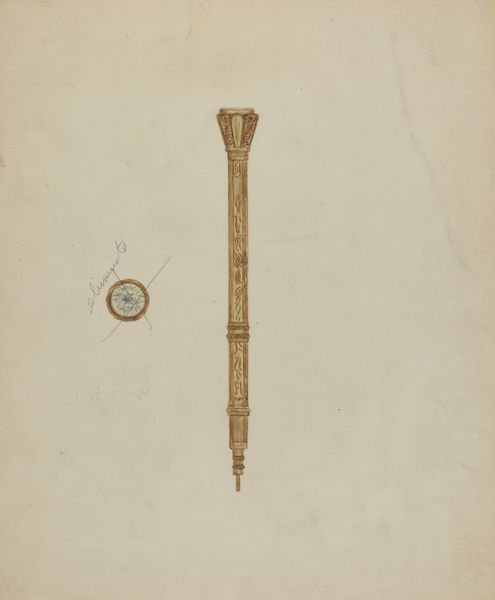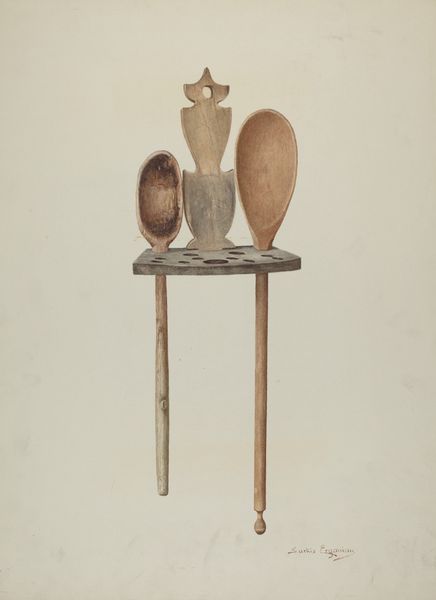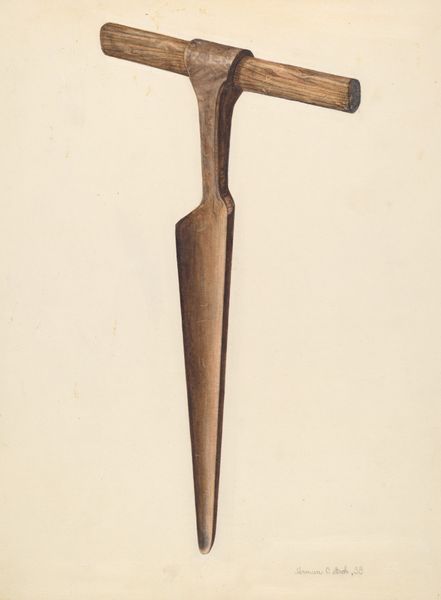
drawing
#
drawing
#
charcoal drawing
#
watercolour illustration
#
charcoal
#
watercolor
#
realism
Dimensions: overall: 31.6 x 24.1 cm (12 7/16 x 9 1/2 in.) Original IAD Object: 33" long; 18" wide
Copyright: National Gallery of Art: CC0 1.0
Editor: This is "Bishop Hill: Auger" by Harry G. Aberdeen, around 1936. It looks like watercolor and charcoal on paper. It's a really straightforward depiction of a woodworking tool... Almost like a technical drawing, but with a sensitive rendering of the materials. What strikes you when you look at this piece? Curator: For me, it's about labor and the tools that enable it. We have a highly detailed representation of an auger. Consider what the auger *does*: bores holes, preparing material for joining. Aberdeen focuses on a *thing*, foregrounding a common tool and giving it monumental significance. It elevates the everyday. Editor: Monumental, yes! Even though it's just watercolor and charcoal, there’s a kind of grandeur. But why choose this specific tool? Curator: Think about the Bishop Hill Colony itself. A Swedish religious community built on communal labor. An auger, in that context, isn't just a tool; it symbolizes the means by which the community literally constructs its world. Consider how humble material—wood—is transformed. It connects to questions of production and use. Editor: So the *representation* of the tool becomes almost as important as the tool itself. It’s a testament to labor and community, more than just a picture of an old tool. I didn’t think I could be this interested in a picture of an auger. Curator: Exactly! It demonstrates that art can be found in the most unexpected places if we investigate the relationship between an object, its production, and its use within a particular community. Editor: I'm seeing so much more now. The context really shapes how we understand it. Thanks for helping me look closer!
Comments
No comments
Be the first to comment and join the conversation on the ultimate creative platform.
